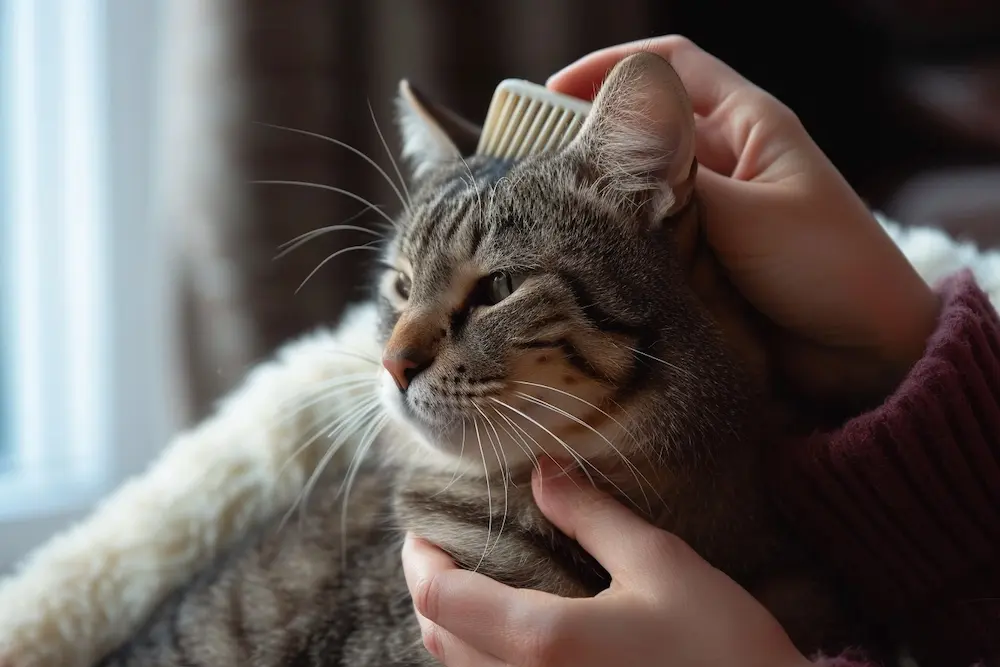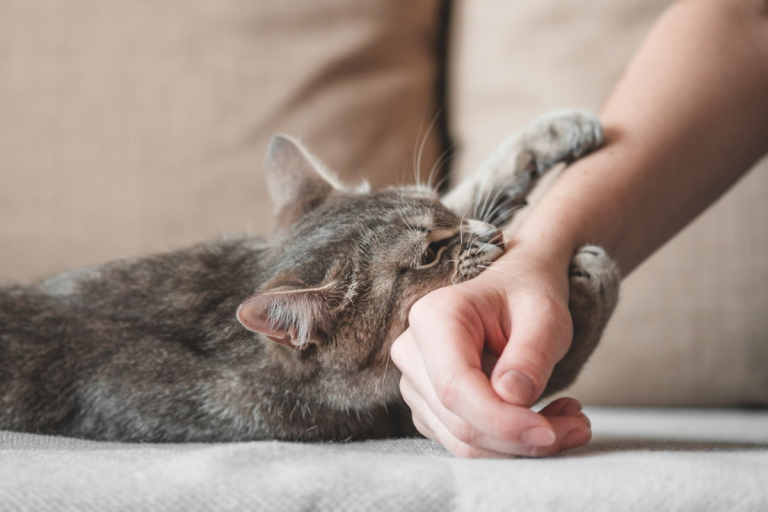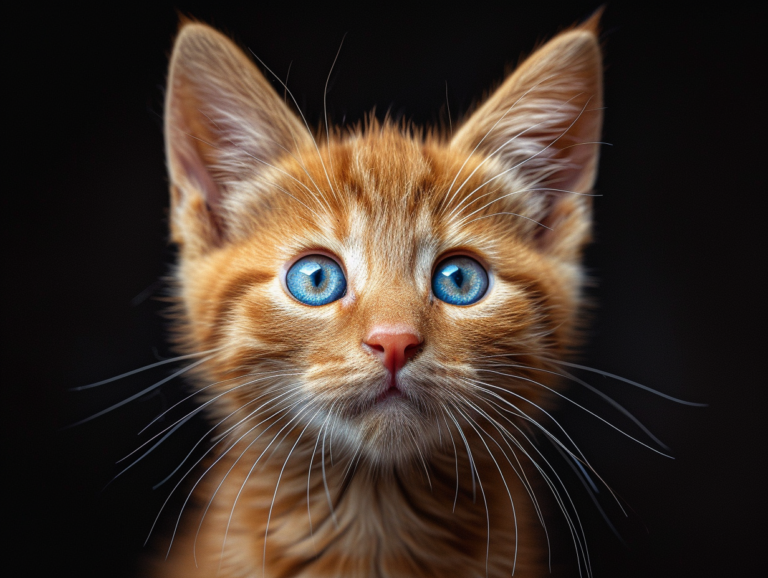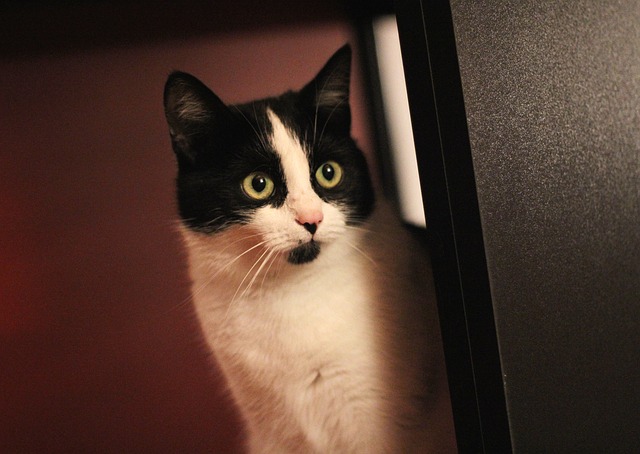Cat Grooming Guide: From Basics to Pro Tips For a Healthy Cat
Have you ever watched your
Even though their reputation as self-sufficient groomers, all cats need a helping hand from their caretakers to stay clean and healthy.
Grooming a
But where do you start, especially if the mere thought brings up feelings of anxiety and stress for both you and your
I’ve been there, staring down at my
It doesn’t have to be a challenging job.
This article will guide you through the essentials of
Whether you’re a first-time
Understanding Cat Grooming Basics
As we venture deeper into the world of
Grooming isn’t just about keeping your
Let’s jump into the natural grooming behaviors of cats and understand when they might need a helping hand from us.
The Natural Grooming Behaviors of Cats
Cats are notorious for their meticulous grooming habits.
You’ll often see them engaged in what seems like a never-ending cycle of licking, nibbling, and brushing their fur with their paws.
This behavior isn’t solely for cleanliness; it’s also a way for them to regulate their body temperature and stimulate the production of natural oils in their skin.
These oils give their coat a sleek sheen and provide a layer of protection.
But, there’s more to this self-grooming than meets the eye.
By licking their fur, cats also spread their scent, marking their territory in a subtle yet effective way.
It’s a ritual that’s deeply ingrained in their instincts.
Yet, even though their best efforts, there are times when the task of grooming can become too daunting for them to handle alone.
Signs Your Cat Needs Help with Grooming
Recognizing when your
While cats manage to keep up with their grooming routine quite well, certain signs should alert you that it’s time to step in.
First, if you notice mats or tangles in their fur, it’s a clear indication that they’re struggling.
Mats can quickly become tight and painful, pulling on the skin and potentially leading to infection.
Another sign to look out for is excessive scratching or biting of their fur.
This behavior could point to fleas, mites, or allergies needing your immediate attention.
Also, pay close attention to your
Obesity can hinder their ability to groom those hard-to-reach areas, leaving their back and hindquarters unkempt.
In such cases, they’ll benefit immensely from your intervention with a brush or comb.
Besides, senior cats or those with mobility issues might find grooming not just challenging but also painful.
Arthritis, for example, can make the twisting and turning required for self-grooming a challenging job.
In these instances, your gentle touch can make all the difference in keeping their coat clean and tangle-free.
Helping your
It can be a tender moment between you and your pet, strengthening the bond you share.
With a gentle brush and a loving approach, you can turn grooming from a necessity into an act of care and affection.
Keep an eye out for the signs that your
Essential Cat Grooming Tools
Embarking on the journey of grooming your
Not only does it fortify the bond between you and your pet, but it also significantly enhances their well-being.
To ensure you’re equipped for this task, let’s jump into the essential tools you’ll need.
Choosing the Right Brushes and Combs
I can’t stress enough how vital it is to select the appropriate brush or comb for your
The variety of coat types—from short to long hair—demands different grooming tools.
For short-haired breeds, a fine-toothed comb or a rubber grooming mitt works wonders to remove loose fur and stimulate the skin.
On the other hand, long-haired cats benefit immensely from a wide-toothed comb and a slicker brush.
The slicker brush, with its fine, tightly spaced wires, is perfect for detangling and preventing mats, while the comb helps to smooth out the fur and remove any remaining loose hairs.
Imagine brushing your hair with the wrong type of brush.
Not only would it be ineffective, but it could also cause discomfort.
The same principle applies to our feline friends.
Hence, investing in a high-quality brush or comb tailored to your
Nail Clippers and Files for Cats
Trimming a
For most cats, a pair of small, sharp nail clippers designed for pets is ideal.
These clippers allow for precise cuts without splitting or crushing the nail.
Some
The key is to choose a style that feels comfortable in your hand and offers you the most control.
Following the trim, a gentle filing can remove any sharp edges, making your
A simple, pet-friendly nail file can do the job perfectly.
Remember, it’s about safety and comfort for both you and your
Hence, starting with a small trim and gradually adjusting to your
Selecting Safe Cat Shampoos and Conditioners
When it comes time to bathe your
Cats have sensitive skin, and using products not formulated for them can lead to irritation or worse.
Look for shampoos and conditioners specifically made for cats, preferably with natural ingredients like aloe vera or oatmeal that soothe and moisturize the skin.
Think of it like choosing a shampoo for yourself.
You wouldn’t use a harsh, chemical-laden product on your own hair, so why subject your
Besides, some cats might have specific skin conditions that require specialized shampoos.
If you’re unsure, a quick consultation with your vet can point you in the right direction.
Summarizing, grooming your
With the right tools—be it brushes and combs, nail clippers and files, or shampoos and conditioners—you can ensure the process is as smooth and comfortable as possible for your furry friend.
By tailoring your selection to your
Step-by-Step Guide to Grooming Your Cat
Pre-Grooming: Making Your Cat Comfortable
Before diving into grooming, making your
Like humans preparing for a spa day, cats need a relaxing introduction.
Start by choosing a quiet space, perhaps where they often nap.
Let them sniff and explore the grooming tools; brushes, clippers, and shampoos should become familiar objects, not threats.
Playtime can be a great precursor to grooming, using their favorite toy to diffuse tension.
Remember, patience is key.
If your
Trimming Your Cat ’s Nails Safely
Trimming nails can seem daunting, but it’s a breeze with the right approach.
First, ensure your
Use specially designed
Gently press on their paw to expose the nail, and trim only the tip, avoiding the quick to prevent bleeding.
If you’re unsure, plenty of videos offer step-by-step guidance.
Alternatively, a vet or groomer can demonstrate the technique.
Consistency is beneficial, making nail trimming a normal part of your
Brushing Techniques for a Healthy Coat
A shiny, healthy coat is the pride of any
For short-haired breeds, a stiff bristle brush removes loose fur and stimulates the skin.
Those with long-haired companions might prefer a long-toothed comb or a de-shedding tool to tackle tangles and mats, especially behind the ears and along the legs.
Brush gently in the direction of hair growth, mimicking the
Regular brushing sessions not only keep the coat clean but also reduce hairballs and strengthen your bond.
The Do’s and Don’ts of Bathing Your Cat
Bathing a
Yes, it might occasionally be necessary.
The key is preparation and understanding.
Do: Use lukewarm water and
Don’t: Use human products or force your
Prepare everything in advance, so you’re not scrambling mid-bath, causing stress.
A slip-proof mat in the sink or tub can provide secure footing.
Most importantly, praise and treats can turn a bath from dreaded to tolerable, or even enjoyable, for your furry friend.
Dental Care: Brushing Your Cat ‘s Teeth
Dental health is crucial for cats, yet often overlooked.
Start early, introducing a
Using a finger brush or soft-bristled toothbrush, gently massage the teeth and gums, focusing on the buildup along the gum line.
Daily brushing is ideal, but even a few times a week can significantly reduce the risk of dental disease.
Remember, positive reinforcement goes a long way.
Treats and gentle praise make the experience something your
Ear Care: Cleaning Without Causing Stress
Ear care shouldn’t be stressful.
Inspect your
Using a vet-recommended ear cleaner, apply a few drops into the ear canal, then gently massage the base of the ear.
Let your
Never insert cotton swabs into the ear canal, as this could cause damage.
Eye Care: Gentle Cleaning Tips
Finally, eye health is not to be ignored.
Cats often accumulate discharge around their eyes.
Using a moist cotton ball (water or a vet-approved eye cleanser), gently wipe away any buildup.
Remember to use a separate cotton ball for each eye to prevent possible cross-infection.
Regular checks can help you spot any issues early, such as excessive tearing or inflammation, warranting a vet visit.
Grooming your
While some tasks might seem challenging at first, with patience and practice, they’ll become a fulfilling part of your life with your feline companion.
Remember, every
The goal is always to ensure a safe, comfortable, and happy grooming experience for your beloved pet.
Managing Common Grooming Challenges
Grooming cats, while rewarding, comes with its set of challenges.
From hairballs to skin conditions, every
Let me guide you through some essential tips and tricks I’ve learned along the way.
Preventing and Dealing with Hairballs
Hairballs aren’t just unpleasant surprises on your living room floor; they can also be a sign of grooming issues.
Cats ingest fur as they clean themselves, which can accumulate into hairballs.
Hence, regular brushing becomes essential, especially for long-haired breeds.
By brushing your
Also, specialty
Incorporating these into your
For persistent cases, a vet might recommend a laxative gel specifically formulated for cats but always consult a professional before trying new treatments.
Grooming Long-Haired vs Short-Haired Cats
The grooming needs of long-haired and short-haired cats differ significantly.
Long-haired cats, such as Persians and Maine Coons, require daily brushing to prevent mats and tangles.
I find that a wide-toothed comb works wonders for the first pass, followed by a finer brush to smooth the coat.
Start at the head, move in the direction of hair growth, and gently work out any knots.
Mats can be tricky; if they don’t comb out easily, it might be safer to have a professional groomer address them.
Short-haired cats, on the other hand, tend to manage their grooming quite well but still benefit from a weekly brushing.
This helps distribute natural oils throughout their coat, keeping it healthy and shiny.
For these cats, a simple grooming glove or a soft bristle brush usually does the job perfectly.
Recognizing and Addressing Skin and Coat Problems
Skin and coat problems can be a distress signal from your
Indicators such as excessive scratching, dandruff, bald spots, or an unusually greasy or dry coat should prompt immediate attention.
The cause might be as simple as a dietary deficiency or as complex as an underlying health issue.
First off, ensure your
These nutrients support skin health and add a luxurious shine to their coat.
If a good diet doesn’t do the trick, it’s time to examine their environment.
Allergens like pollen, mold, or even certain types of
Regular baths with a hypoallergenic shampoo can relieve their discomfort, but remember, baths can be stressful for cats.
Always approach bath time with patience and care, making sure to rinse thoroughly to avoid residue that could irritate the skin further.
But, if the problem persists, a trip to the vet is in order.
They can test for a range of issues, from parasites to hormonal imbalances, prescribing medication or special shampoos as needed.
By preemptively addressing these common grooming challenges, you ensure your feline friend not only looks their best but feels their best, too.
Armed with the right tools and knowledge, you can turn grooming from a chore into an enjoyable bonding experience for both you and your
Advanced Grooming – What You Need To Know
Understanding Cat Skin and Fur Health
Caring for your
Just like humans have a variety of skin types, cats also have variations in their skin and fur that can indicate different health states.
For instance, dry, flaky skin or fur can be a sign of dehydration or a dietary deficiency, whereas oily skin could indicate an overactive sebaceous gland.
A prime example of maintaining good skin and fur health is ensuring your
Including omega-3 fatty acids in their diet, found in fish oil, can also greatly improve skin and fur quality, making it softer and shinier.
Regular grooming plays a crucial role here.
By brushing your
Remember, a
Creating a Regular Grooming Routine
Establishing a grooming routine is something I cannot stress enough.
It’s not just about keeping your
A routine doesn’t have to be complex; start simple. For short-haired breeds, a weekly brush might suffice, but for long-haired cats, I’d suggest upping this to several times a week to prevent tangles and mats.
Make grooming a positive experience for both of you.
Aim for short sessions in the beginning, gradually increasing the time as your
Use this time to check for any irregularities on their skin, lumps, bumps, or parasites, acting as an early warning system for potential health issues.
I always have my grooming toolkit ready, which includes a brush or comb suited to my
Investing in these tools and knowing how to use them can make a world of difference in your grooming routine’s effectiveness and efficiency.
When to Seek Professional Grooming Services
But, there are times when professional help is needed.
If you’re dealing with excessive matting, skin issues, or you’re simply unsure how to trim those nails safely, it’s time to call in the pros.
Professional groomers are not just about giving your
Also, professional groomers can offer invaluable advice tailored to your
For example, after noticing my
In essence, grooming isn’t just about aesthetics; it’s a cornerstone of good health care for your
By understanding the nuances of their skin and fur, establishing a regular grooming routine, and knowing when to seek professional services, you’re ensuring your furry friend not only looks their best but is also feeling their best.
And remember, grooming is also a splendid way to strengthen the bond between you and your
Frequently Asked Questions
What not to do when grooming a cat ?
Avoid brushing your
Using the incorrect type of brush or brushing against the fur’s natural direction can cause discomfort.
Never skip grooming the ears and paws, as these areas also require attention.
If grooming seems overwhelming or specialized care is needed, don’t hesitate to visit a professional groomer.
How do cats know where to lick themselves?
Cats are instinctively driven to groom themselves, a behavior they learn from their mothers during infancy.
This natural instinct ensures they dedicate considerable time to maintain their cleanliness by licking every accessible part of their body, promoting hygiene and health.
Is it worth taking a cat to a groomer?
Yes, taking your
Professional grooming services contribute to a healthy coat, help eliminate bad odors and mats, reduce hairballs, and can address specific needs like nail trimming and shaving.
Regular grooming sessions support your
Conclusion
Grooming your
It’s a vital part of their health and a unique way to deepen the bond you share.
Through the steps and tips I’ve shared, you’re now equipped to tackle grooming challenges head-on.
Whether it’s establishing a routine that suits your
Remember, a well-groomed
Let’s make grooming a joyful experience for both you and your






